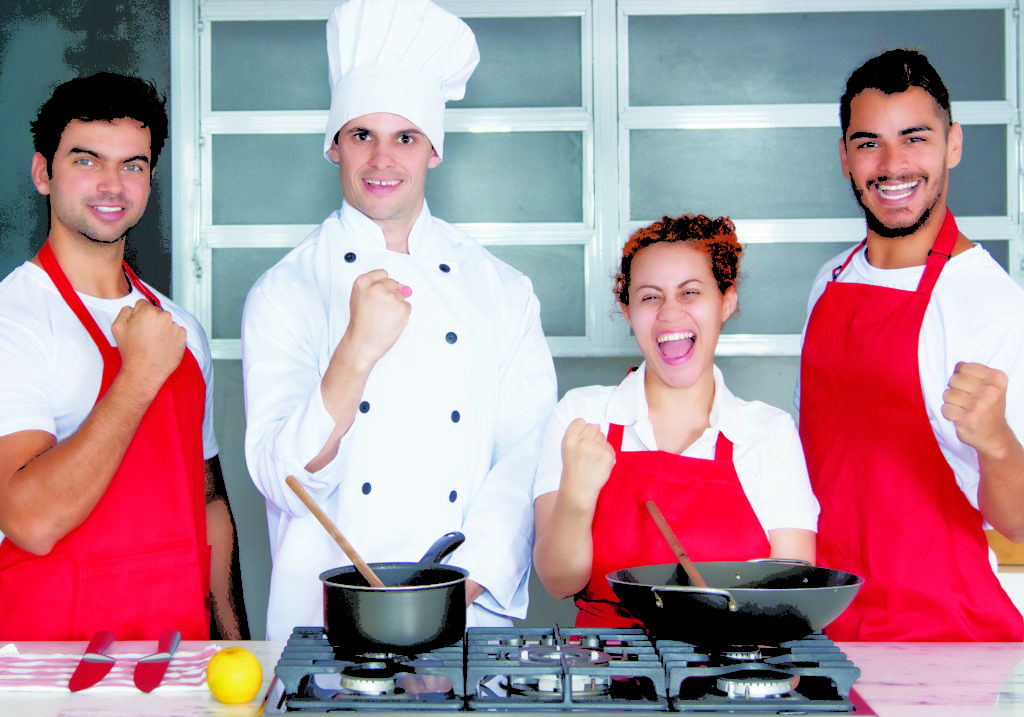
Unless otherwise noted, r atios here and throughout the website are based on weight. We use ratios as a quick culinary reference. This is where the science of cooking becomes art and requires the judgment of the chef to adjust the ratio according to the desired outcome. For example: In a standard 3:1 ratio for vinaigrette, oils differ in flavor and viscosity, while vinegar differs in color, flavor, and intensity, so changing from white wine vinegar to balsamic vinegar, or from neutral-tasting vegetable oil to a full-flavored olive oil will alter the taste and the ratio. Ratios include only the major components of food preparation and don't include additional ingredients, flavorings, or seasonings that may alter their mix or cause yields to fluctuate (large-scale cooking often requires seasoning or leavening adjustment). of bones), which means converting the water to a liquid measure (knowing that a one-pint liquid measure equals one pound takes out the mystery). For example, a ratio for preparing a stock calls for 3 parts liquid to 2 parts bones (3 lbs.
#CULINARY FUNDAMENTALS DAY 7 PROFESSIONAL#
Ratios based on weight are the most accurate method for a professional kitchen but also require the ability to convert between different measurements.


Knowledge of fundamental culinary techniques, good organization skills, accurate measuring, and the ability to balance flavors and seasonings are essential to their success. They also don’t take into account individual preferences of taste, texture, consistency, or the addition of other ingredients. Ratios are basic science formulas of ingredients and do not include information on procedures or techniques. Once you start thinking about ratios, the possibilities are endless. There are ratios for soups and sauces, risotto, grains, and legumes, as well as bread and pastries. Even with all these variables, however, the process-and the ratio-holds true. The liquid might include wine, beer, or stock, and the fat may be olive oil, butter, or bacon fat. The mirepoix may morph into an Italian soffrito, or incorporate mushrooms, garlic, and shallots. This simple ratio can be applied to any braise or stew, whether you are preparing a pot roast, a fricassee, or an Indian curry. For example, a basic ratio for a braise uses 10 parts protein, 1 part mirepoix, and 1–2 parts liquid as its foundation. Ratios can be devised for almost any preparation, even complex ones. As a way of speeding and simplifying the cooking process, these and other simple ratios are helpful and, compared to a recipe, relatively easy to memorize. Examples of ratios by weight include a roux (equal parts fat and flour) or a bread dough (flour and water), by the volume they include a simple syrup (equal parts water and sugar) or a rice pilaf (2 parts liquid to 1 part rice), or by count when preparing a hollandaise sauce (6 egg yolks for every 1 lb. Ratios are calculated by weight, volume, or through mixed methods incorporating a combination of weight, volume, or count. Ratios can also be used to develop recipes, and recipes can be evaluated through ratio analysis to test for accuracy. By using ratios production can be easily scaled to the desired quantity. Instead of measuring by cups or pounds, ingredients are defined in “parts” that are relative to each other in quantity. Employ appropriate baking techniques.Whereas conventional recipes use specific ingredient measurements, culinary ratios are a fixed proportion of ingredients in relation to one another. Work effectively as a member of a team.ġ1. Interpret recipes for the intended outcome.ġ0. Demonstrate appropriate seasoning of food products.ĩ. Identify kitchen tools and equipment with their use.ħ. Apply different cooking techniques and predict their outcomes.ĥ. Identify various meat, poultry or fish cuts and their uses.Ĥ. Demonstrate knife skills and cutting techniques.ģ.

Use basic kitchen terminology appropriately.Ģ. Prerequisite: FSA 106 (may be taken concurrently or previously completed)ġ. Students will engage in various food preparation techniques and will sample their culinary creations.

The course covers instructions in the foundations of culinary arts, including food theory, demonstrations and hands-on cooking. Course Descriptions FSA 103 - Culinary Arts I: Fundamentals of Food Preparation


 0 kommentar(er)
0 kommentar(er)
